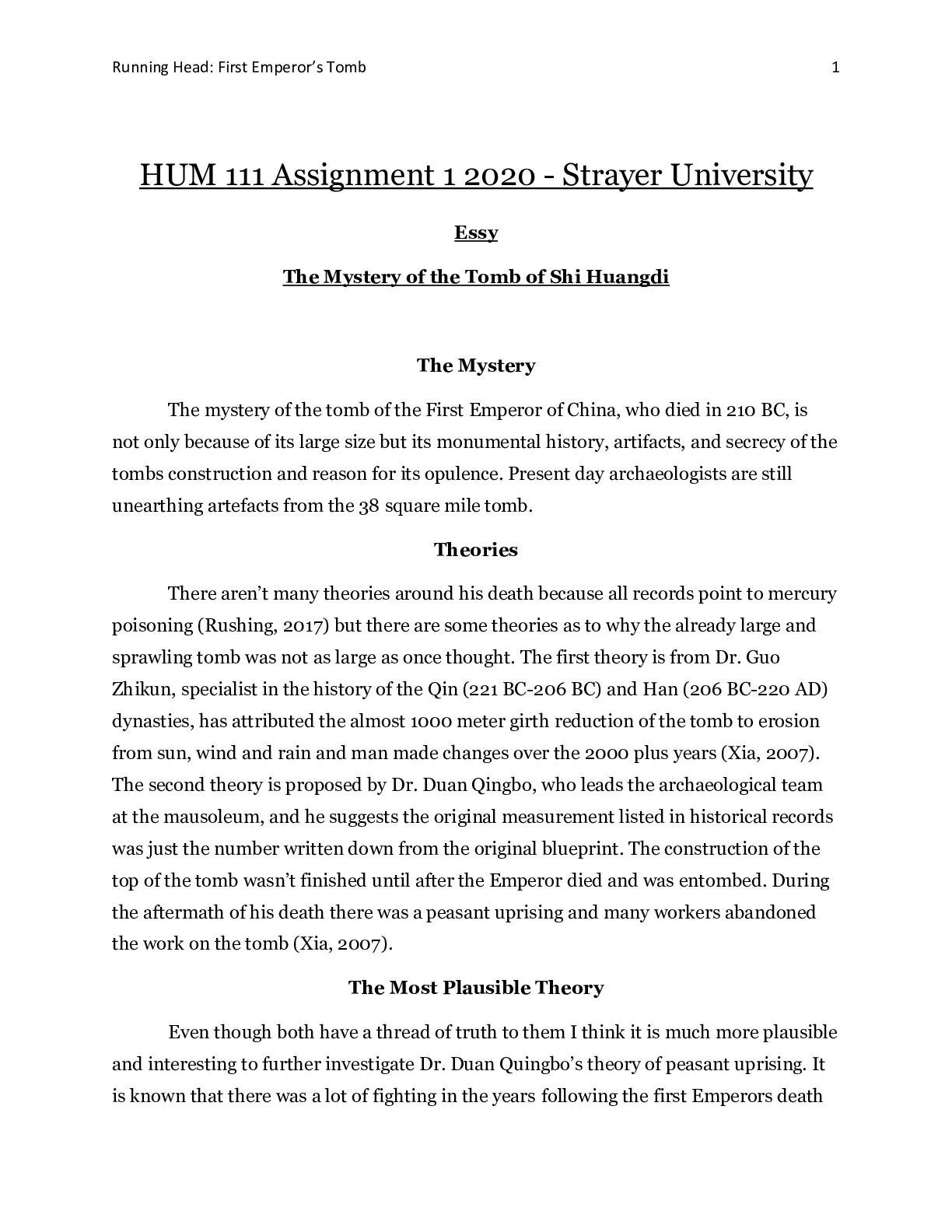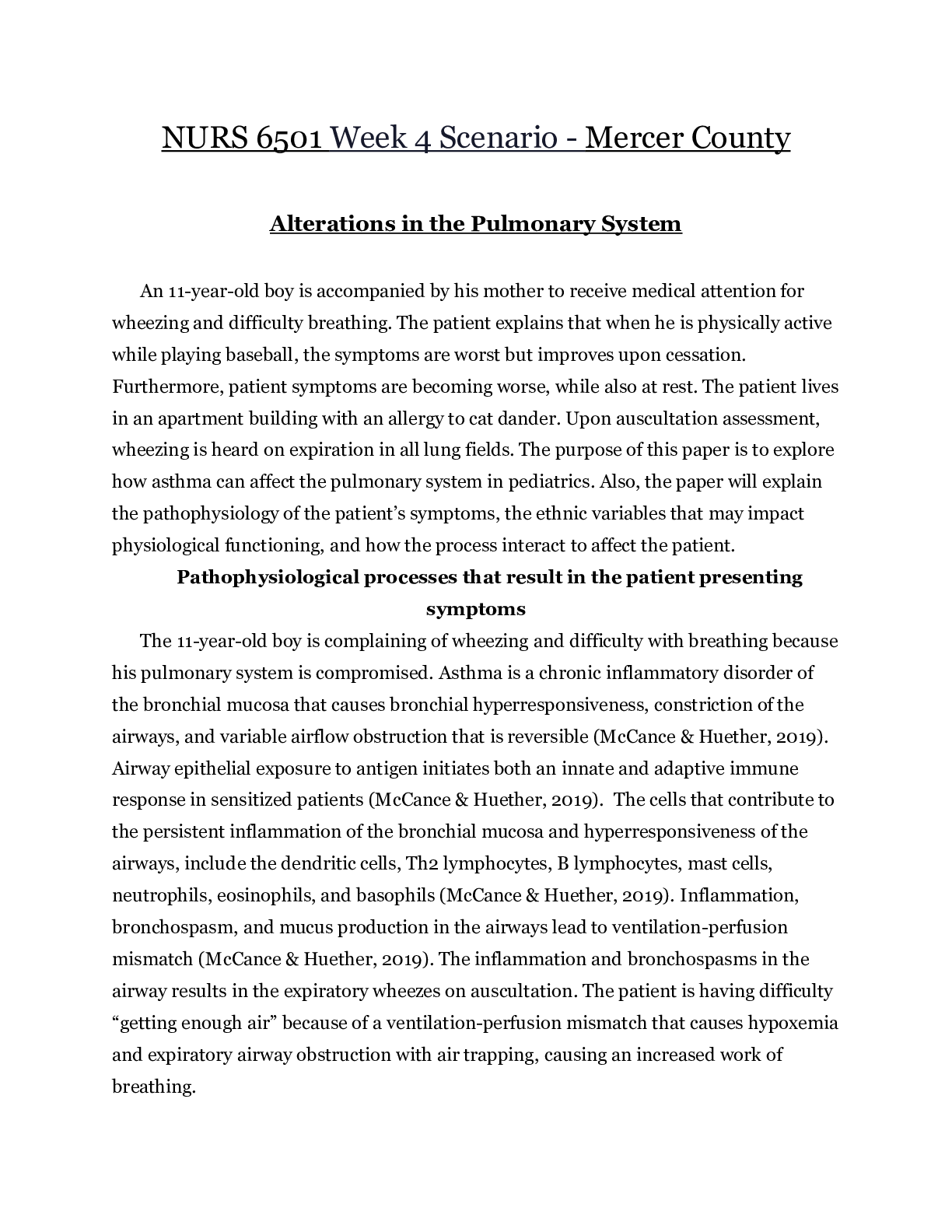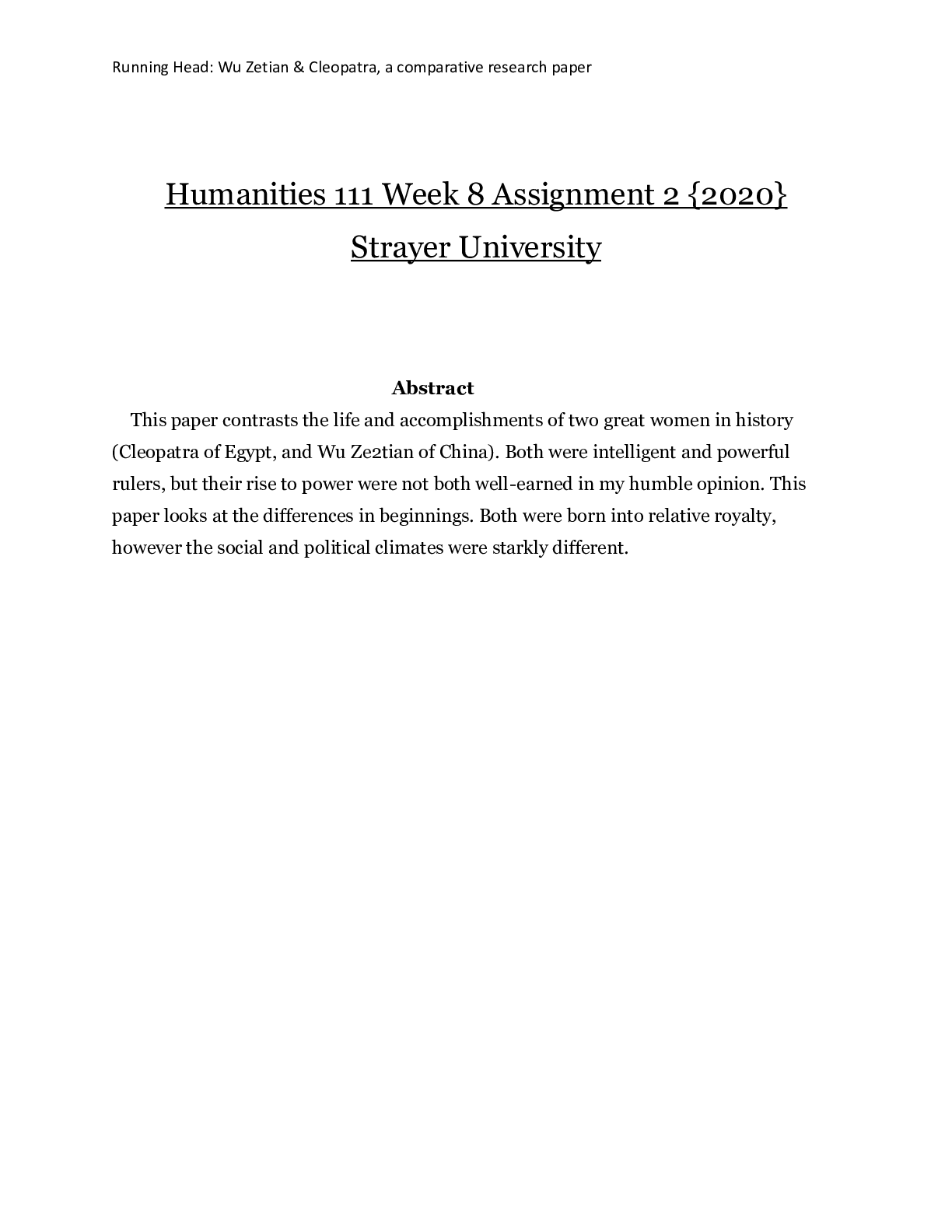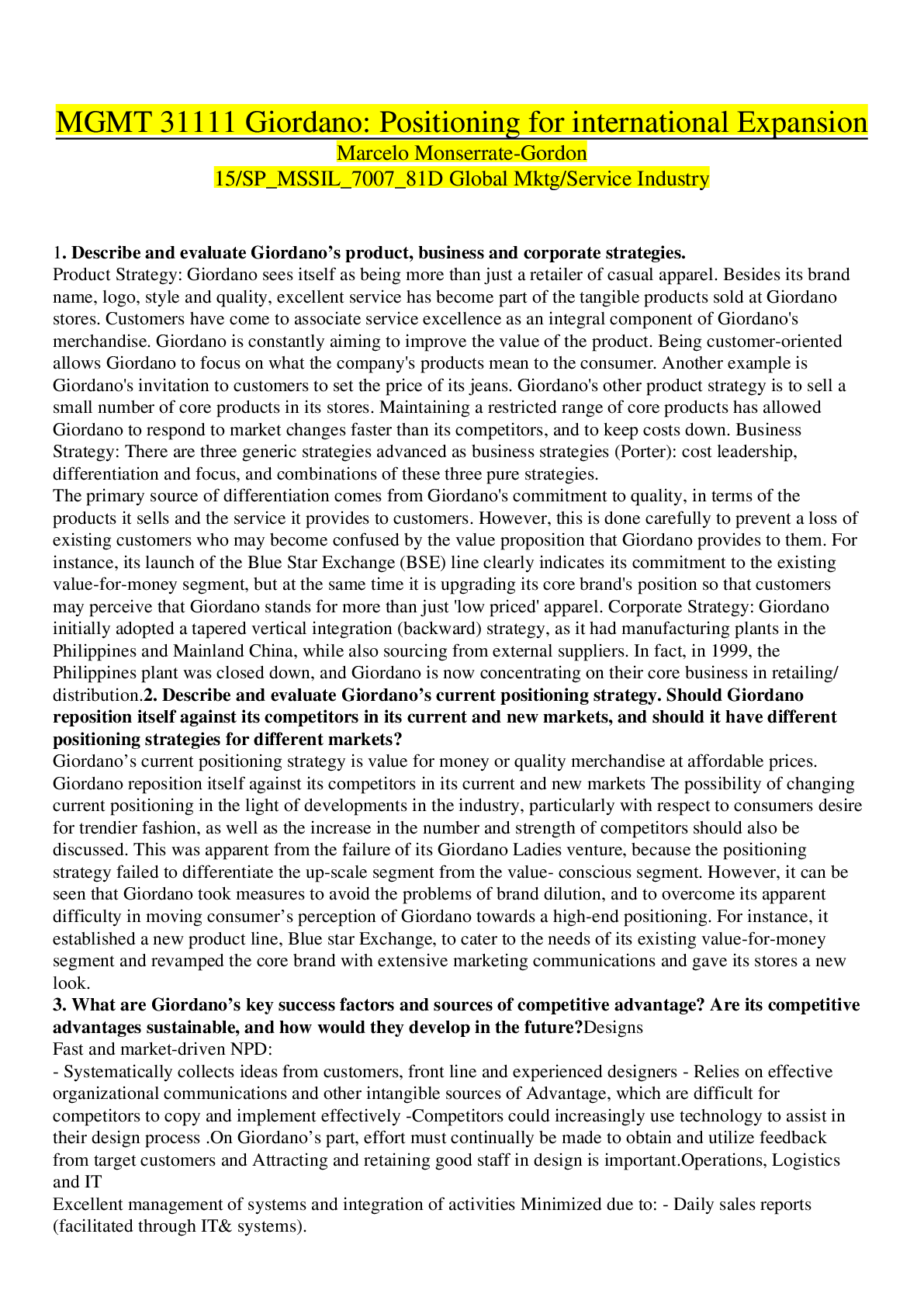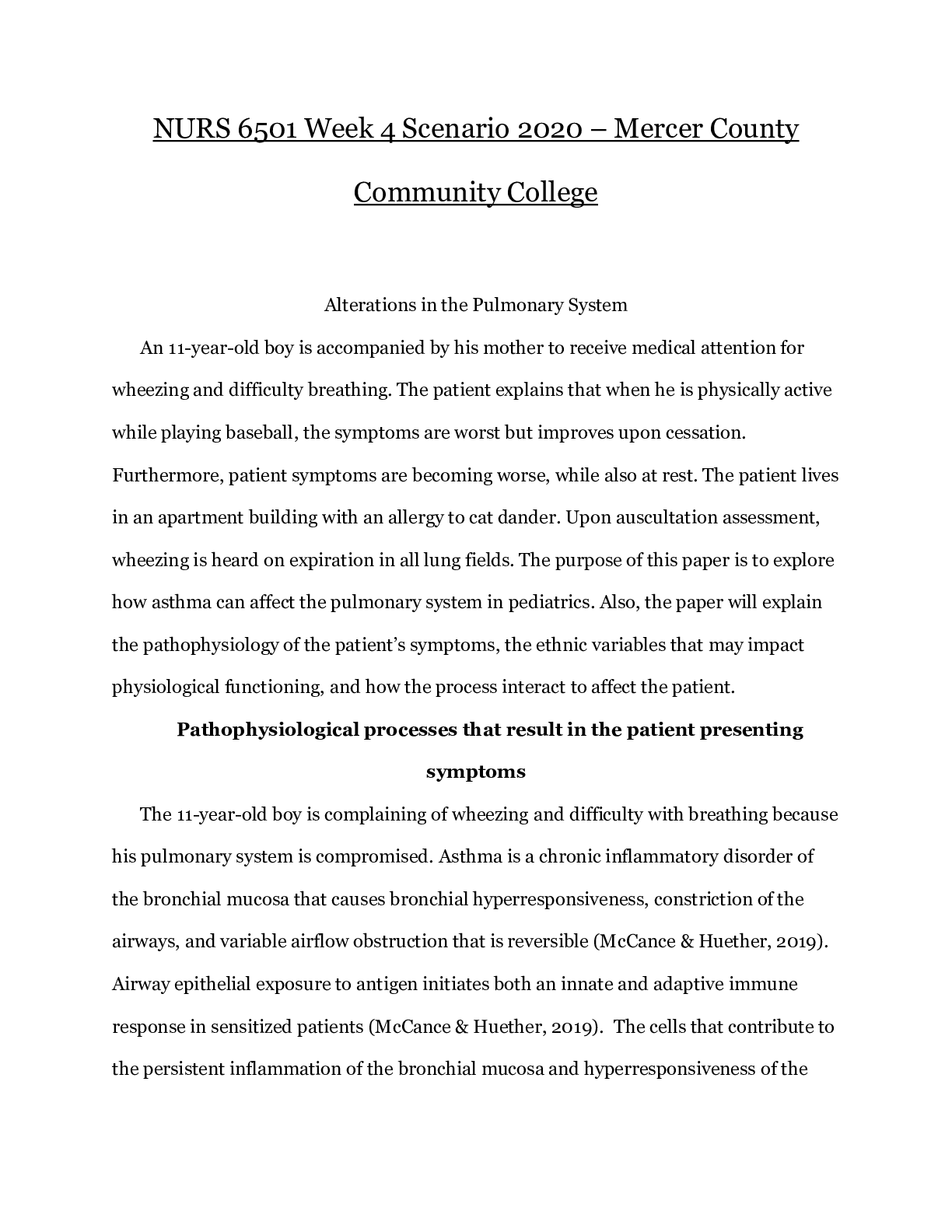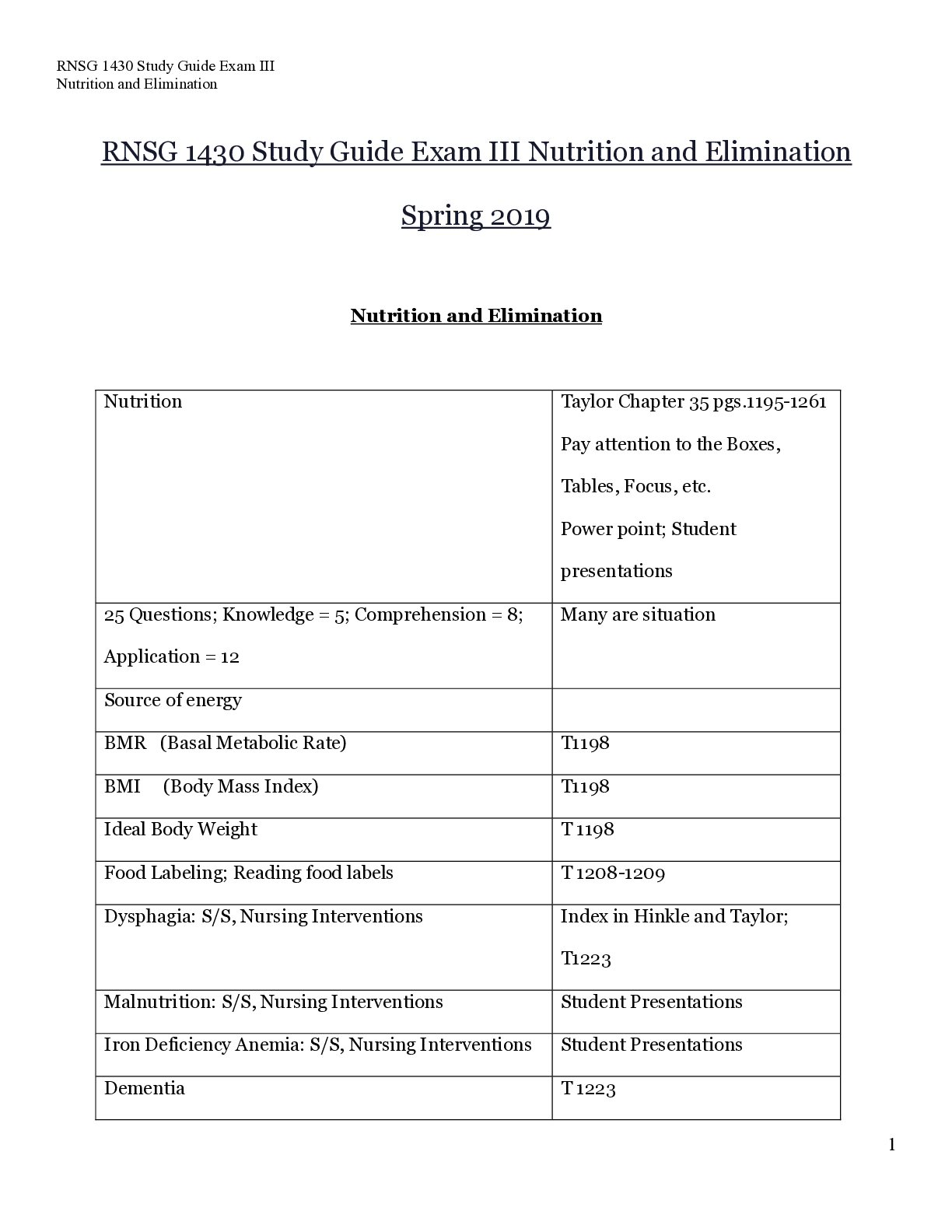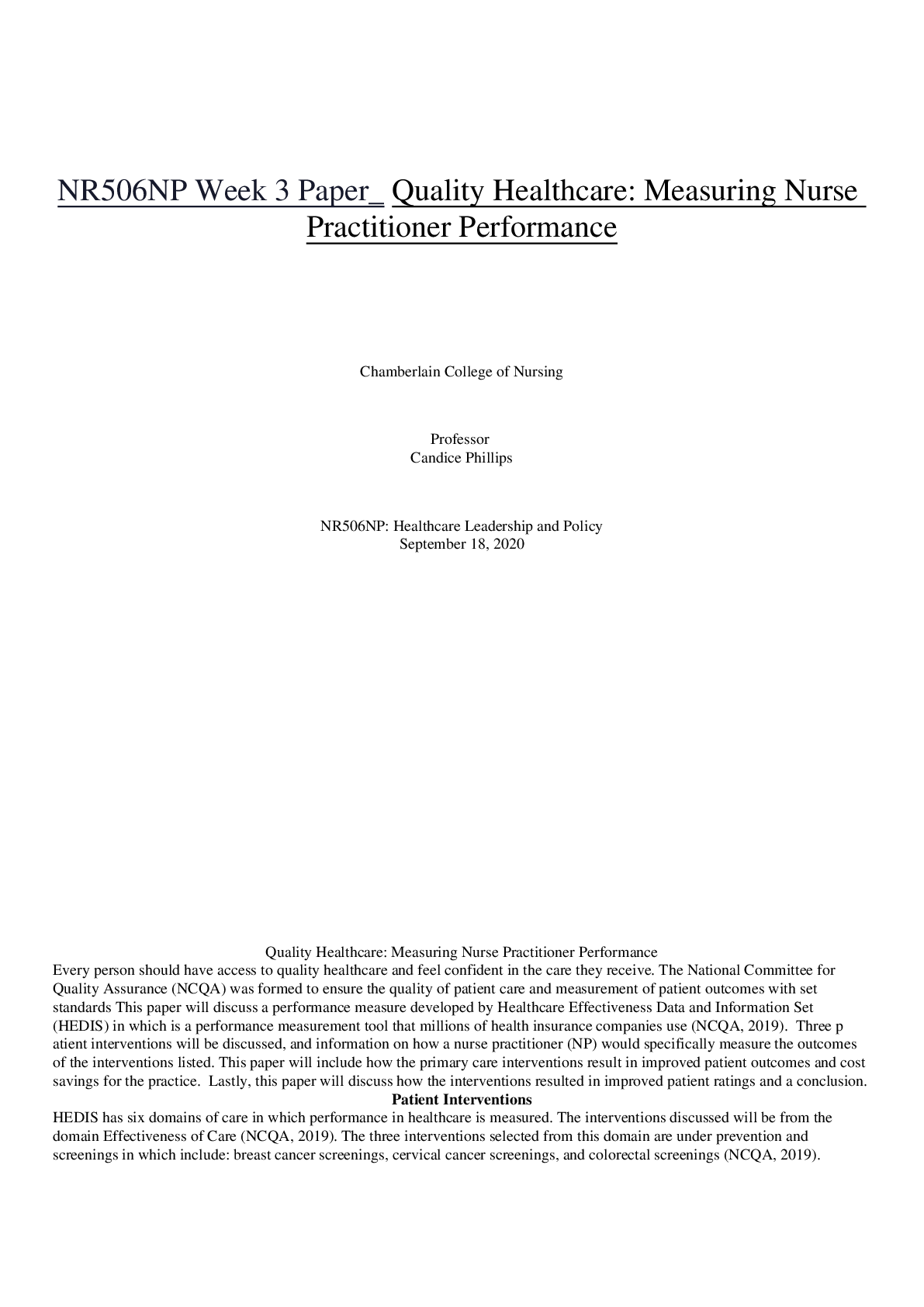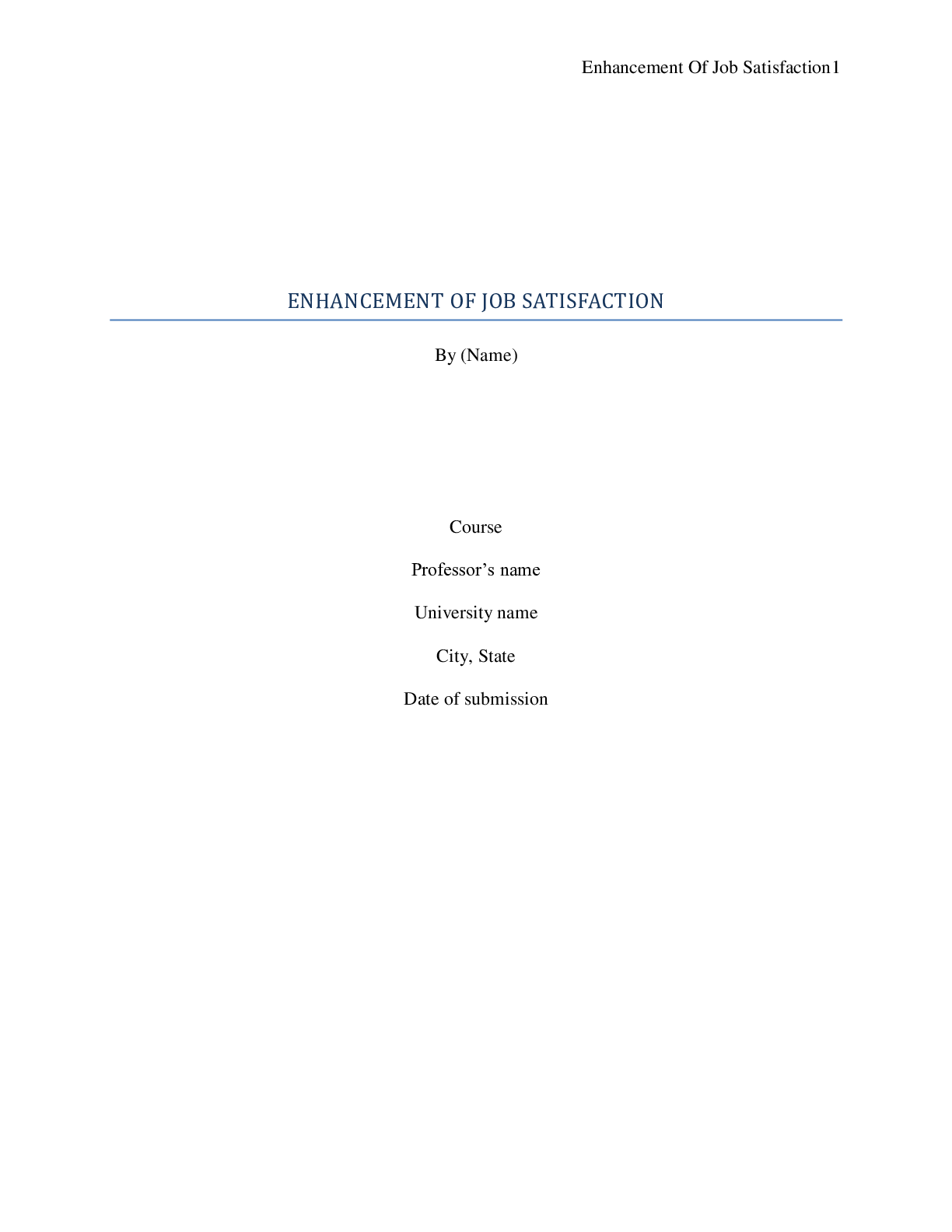*NURSING > ESSAY > NR 506 Week 3 Quality Healthcare: Measuring Nurse Practitioner Performance 2020 | Healthcare Leaders (All)
NR 506 Week 3 Quality Healthcare: Measuring Nurse Practitioner Performance 2020 | Healthcare Leadership and Policy
Document Content and Description Below
NR 506 Week 3 Quality Healthcare: Measuring Nurse Practitioner Performance Chamberlain College of Nursing NR506NP: Healthcare Leadership and Policy March 2020 Quali... ty Healthcare: Measuring Nurse Practitioner Performance The National Committee for Quality Assurance (NCQA) was created to ensure and improve the quality of healthcare and measure patient outcomes with set standards. Healthcare Effectiveness Data and Information Set (HEDIS) is the most widely used healthcare performance measurement tool comprised of six domains of care including the effectiveness of Care, access and availability of care, the experience of care, utilization and risk-adjusted utilization, health plan descriptive information and measures collected using electronic clinical data systems. This paper will discuss adult BMI assessment from HEIDI'S effectiveness of care prevention and screening domain. Furthermore, three patient interventions will be identified, and specific implementation and measurement of outcomes will be identified for each intervention. Patient Interventions Adult Body Mass Index (BMI) assessment is defined as the percent of patients aged 18 to 74 years of age with a documented weight and BMI (MacLean, 2018). Assessment and monitoring of patients' BMI are significant for managing weight and the health conditions associated with weight (MacLean, 2018). BMI is the most useful measure of overweight and obese individuals in a population (NCQA, 2018). Assessment and monitoring of adult BMI are beneficial in helping healthcare professionals (HCP) identify those at risk of being overweight and obese and can help them achieve and maintain a healthier weight. The first patient intervention for adult BMI assessment is to obtain and document weight, height, and BMI for all outpatient visits. This can be done by updating the electronic medical record (EMR) to automatically calculate a patient's BMI from entered height and weight. Many HCP fail to document the patient's height, weight and BMI due to time constraints or forgetfulness. With automatic prompts requiring weight and BMI inputs, the likelihood of having documented BMI for adult patients will increase. Patient outcomes can be tracked by creating a spreadsheet with a list of all patients who do and don’t have documented BMI. This way HCP can reach out to those patients that are missing a BMI assessment and get them scheduled to come in for one. The second patient intervention is to offer advice on how to lose weight for patients with BMI outside of normal parameters. This can be implemented by helping patients set weight loss goals and or teaching them how to follow a reduced-calorie meal plan. Studies show that less than half of obese patients visiting care providers are advised on weight loss (MacLean, 2018). Patients rely on advice from HCP, so changes are not likely to be made unless that information is provided to them. It is our duty to provide information and advice to patients that encourages the maintenance of healthy - - - -- - - - - - - - - - - -- - - - - - - - - - - - - - - - - - - - - - - - - - - - - - - - - - - - - - - - manage however, HCP such as APN is in a position to help fight the issue and make a real difference. By accurately assessing and documenting BMI and providing education and assistance in weight management and physical activity patient outcomes will improve, health risks will decline, healthcare costs will decrease and the relationship between patients and providers is strengthened therefore improve patient ratings. References Centers for Disease Control and Prevention (CDC). (2019). Physical activity for a healthy weight. Retrieved from https://www.cdc.gov/healthyweight/physical_activity/index.html MacLean, L. (2018). Improving adult BMI assessment metric coding in a small, urban primary care setting. Nursing Graduate Publications and Presentations, 28. Retrieved from https://pilotscholars.up.edu/cgi/viewcontent.cgi?article=1030&context=nrs_gradpubs National Committee for Quality Assurance (NCQA). (2018). Adult BMI Assessment (ABA). Retrieved from https://www.ncqa.org/hedis/measures/adult-bmi-assessment/ Thabault, P., Burke, P. & Ades, P. (2016). Intensive behavioral treatment weight loss program in an adult primary care practice. Journal of The American Association of Nurse Practitioners, 28. Retrieved from https://onlinelibrary.wiley.com/doi/pdf/10.1002/2327-6924.12319 [Show More]
Last updated: 1 year ago
Preview 1 out of 5 pages
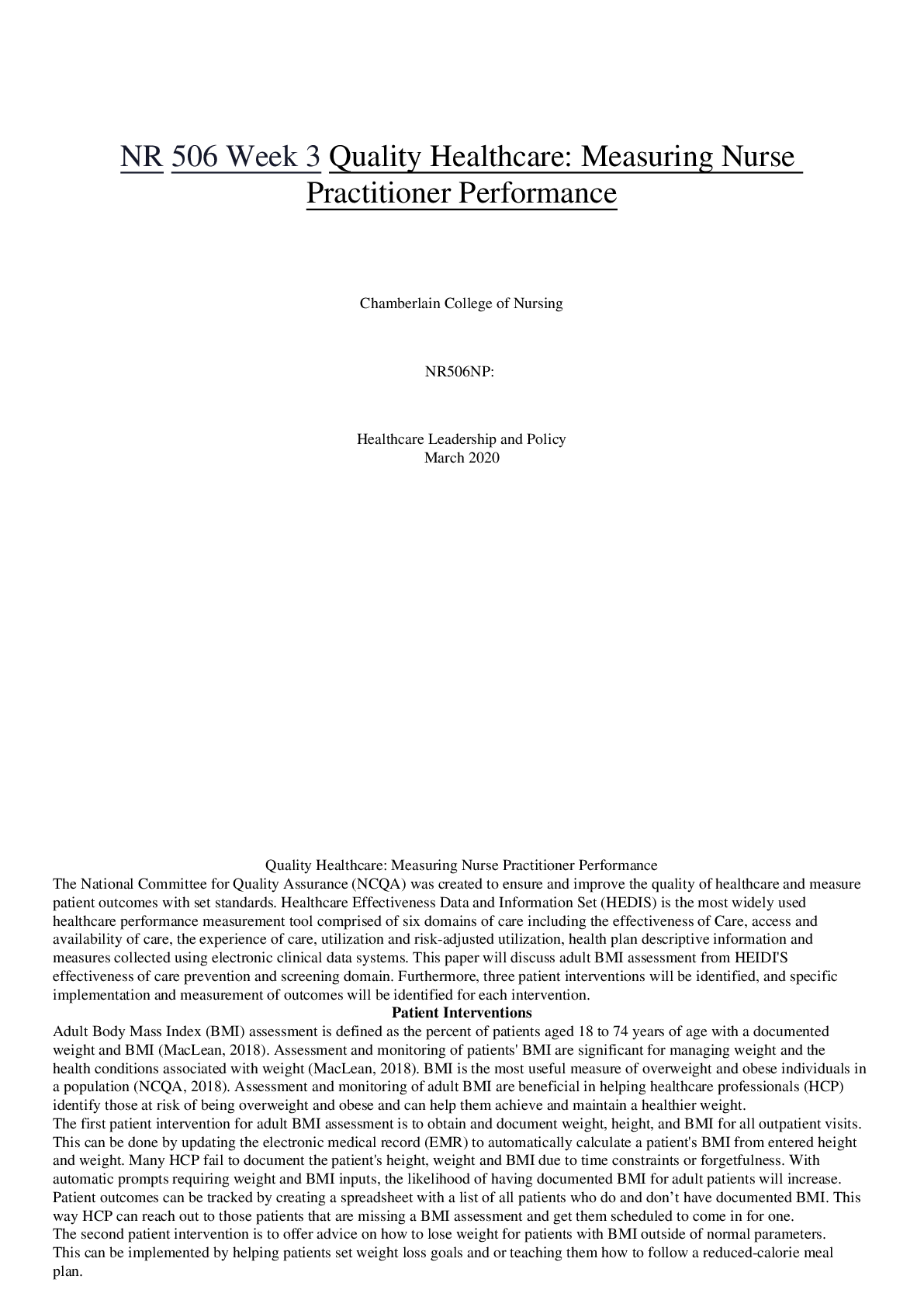
Reviews( 0 )
Document information
Connected school, study & course
About the document
Uploaded On
Jan 25, 2021
Number of pages
5
Written in
Additional information
This document has been written for:
Uploaded
Jan 25, 2021
Downloads
0
Views
47

